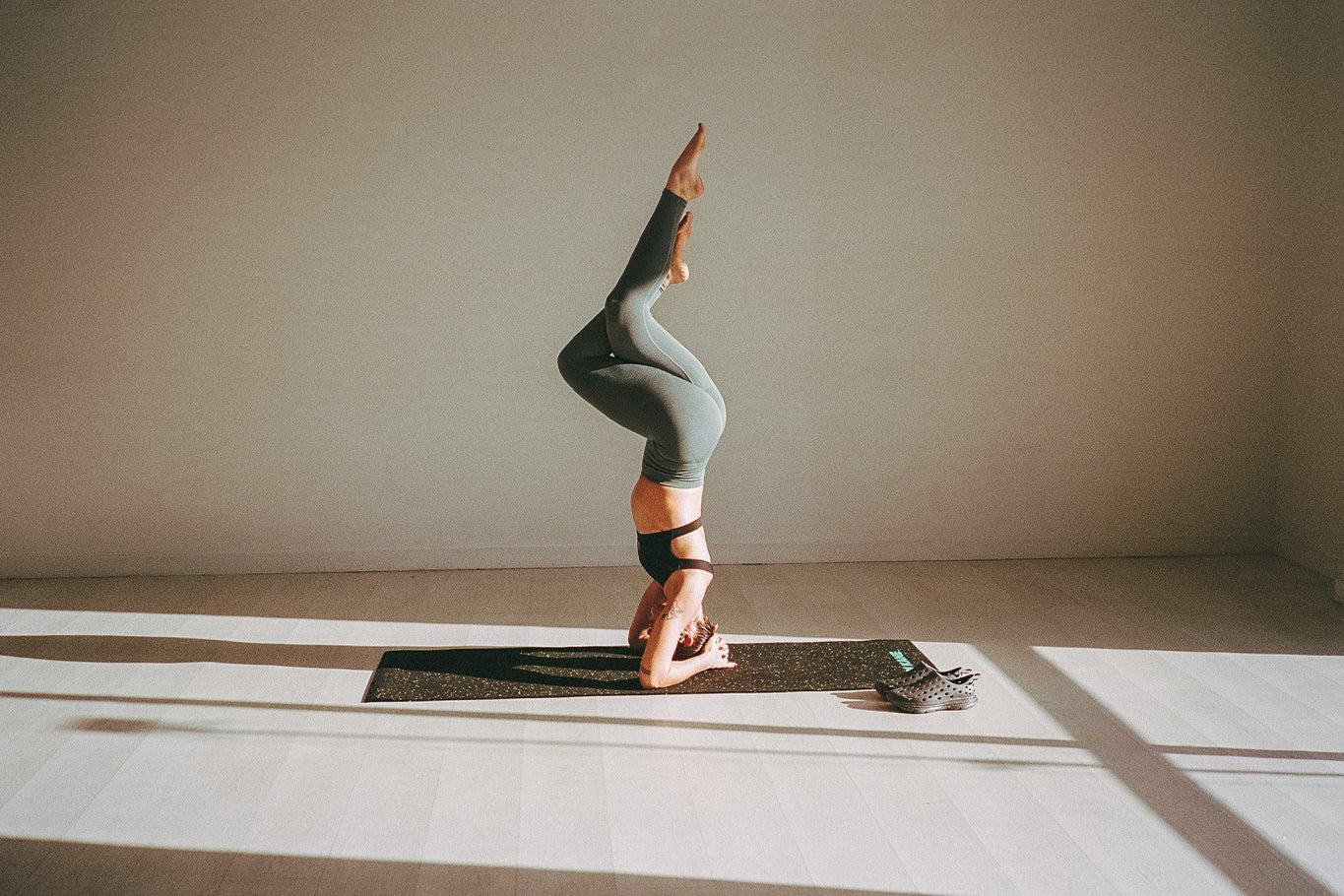The age-old debate about whether to practice yoga before or after a workout intrigues fitness enthusiasts and yogis alike. While yoga can be a complete and challenging workout in itself—with styles like power yoga and Ashtanga providing significant strength and cardiovascular benefits—this discussion focuses specifically on integrating yoga with traditional exercise routines.
As our understanding of exercise science and body mechanics deepens, research reveals that both approaches offer distinct advantages. The choice is highly dependent on your fitness goals and workout routine.
While doing yoga before a workout can enhance body awareness and prepare your muscles through dynamic stretches, practicing afterward may help recovery and release tension accumulated during intense workouts.
The key lies in understanding how your body responds to different sequences and how combining yoga with other forms of exercise—strength training or cardio—can create a more effective fitness regimen that promotes physical performance and mental well-being.
Understanding pre-workout yoga
Incorporating yoga before your primary workout can be an effective warm-up strategy, preparing your body and mind for the challenges ahead. Yoga before a workout awakens your cardiovascular system through gentle movement while increasing body awareness—a crucial element for maintaining proper form during subsequent exercises.
Dynamic yoga stretches, such as flowing between downward-facing dog and upward-facing dog poses, help improve blood flow and gradually elevate your heart rate.
The benefits of doing yoga pre-workout extend beyond basic warm-up functions. This practice can activate key muscle groups, enhance joint mobility, and improve your range of motion before diving into more intense activities. For instance, if you're planning a challenging strength training session, incorporating specific yoga poses that target the muscle groups you'll be working can help establish a deeper mind-muscle connection and reduce the risk of injury.
However, it's important to note that when doing yoga before a challenging workout, focus on dynamic movements rather than deep, static stretching. Research has shown that prolonged static stretching before exercise might temporarily decrease muscle strength and power output. Instead, opt for flowing sequences that emphasize movement and gradual muscle engagement. Sun salutations, for example, offer an excellent way to warm up the entire body while promoting improved flexibility and coordination.
The power of post-workout yoga
On the other hand, practicing yoga after a workout presents its own set of advantages. Your muscles are warm and more receptive to stretching after an intense workout—whether it's weight training or cardio. This makes post-workout the ideal time for deeper, more sustained stretches to help prevent muscle soreness and speed up recovery.
During a tough workout, your muscle fibers undergo microscopic tears—a normal part of the strengthening process. Post-workout yoga can help you recuperate by promoting blood flow to these weakened body tissues. Gentle stretching through poses like child's pose and pigeon pose can help release tension in fatigued muscles while calming your nervous system after an adrenaline-fueled session.
Moreover, post-workout yoga offers an excellent opportunity to cool down gradually while maintaining focus on your breath. This mindful approach helps transition your body from an intense state of activity to a more relaxed one, potentially reducing post-exercise stress. The meditative aspects of yoga can also help consolidate the mental benefits of your workout, leaving you feeling both physically and mentally refreshed.
Finding your perfect balance
When to practice yoga ultimately depends on personal preference and specific goals. Some people find that splitting their yoga practice works best—incorporating brief dynamic sequences before workouts and longer, more restorative sessions afterward. This approach allows you to reap the benefits of both timing strategies while maintaining a balanced exercise regimen.
Consider your primary fitness objectives when making this decision. If you aim to build strength and muscle mass, you might prefer keeping your more intense yoga practice separate from your strength training sessions, perhaps on alternate days. This approach prevents fatigue from affecting your performance in either discipline while allowing you to benefit from both practices.
If improved flexibility and mobility are goals, performing yoga after workouts might prove more beneficial, as your muscles are already warm and more pliable. However, if enhanced performance and injury prevention are your primary concerns, a pre-workout routine focusing on dynamic stretches and movement preparation could be more advantageous.
Practical implementation tips
When adding yoga to your exercise routine, start gradually and pay attention to how your body responds. Begin with shorter sessions of 10 to 15 minutes before or after your workout, and adjust the duration and intensity based on how you feel, paying particular attention to your energy levels.
For pre-workout yoga:
Focus on dynamic stretches and flowing movements that gradually warm up your muscles. Incorporate poses targeting the specific muscle groups you'll use in your upcoming workout. Keep the pace moderate and maintain steady breathing to prepare your cardiovascular system without depleting your energy reserves.
For post-workout yoga:
Begin with gentle movements and progress to deeper stretches as your body cools down. Emphasize poses that counteract the positions held during your workout. For example, if you've been doing a lot of forward-bending exercises, include backward-bending poses. Pay special attention to your breath and use it to help release any accumulated tension.
The role of a professional guide
Working with a personal trainer or qualified yoga instructor (online or in-person) or going to yoga classes can be invaluable when integrating yoga into your fitness routine. These professionals can help you develop a customized approach that considers your current fitness level, goals, and any physical limitations you may have. They can also ensure you maintain proper form in your yoga practice and workouts, maximizing benefits while minimizing the risk of injury.
A professional can also help you modify poses and sequences to complement your specific workout routine, whether you're engaging in strength training, cardio, or other forms of exercise. Their expertise can be invaluable in identifying which yoga poses and sequences will best serve your needs at different points in your fitness journey.
Discover Kane Recovery Shoes!
Recovery extends beyond yoga and stretching. Proper footwear can also play a crucial role in your post-workout routine. This is where specialized recovery shoes come in.
Kane's recovery shoes provide excellent support, comfort, and durability for those in need of top-notch recuperative footwear. Featuring an adjustable hook-and-loop single-strap synthetic upper, plush TPR footbed, and durable injected EVA outsole, these kicks come with all the right features to assist you during your rehabilitation journey.
Aside from providing quality products, they are also committed to sustainability. They have become a Certified B Corporation while dedicating 1% of their overall profits to environmental charities.
When and how to wear Kane Revive
The best moment to wear Kane Revive is immediately after your yoga practice or workout session—they're designed for this crucial recovery period as your body transitions from exercise to rest. Their water-resistant design is ideal for post-workout shower trips or final cool-down stretches on your mat. Simply adjust the strap for a secure fit as your body winds down.
Conclusion: Yoga and exercise timing
Whether you do yoga before or after your workout, the most important factor is consistency and paying attention to how your body responds. Both approaches offer benefits, and you might find that a combination of both, or alternating between them based on your workout type and intensity, works best for you.
Remember that yoga is not just about physical flexibility—it's a practice that enhances awareness, mental focus, and overall well-being. Mindfully incorporating yoga into your fitness routine can create a more sustainable exercise approach that serves your physical and mental health goals.
The key is to remain patient and observant as you experiment with different timing strategies. Pay attention to how your body feels, how well you're recovering, and how your overall performance is affected. Over time, you'll develop an intuitive understanding of what works best for your body and goals, allowing you to maximize the benefits of your practice.
Frequently asked questions
Is a yoga practice better before or after a workout?
Neither timing is inherently "better"—both offer distinct benefits. Pre-workout yoga can improve flexibility and body awareness and warm up muscles through dynamic stretches. Post-workout yoga aids recovery, reduces muscle soreness, and helps alleviate tension. Choose based on your goals and how your body responds. For strength training, consider post-workout yoga. For cardio, yoga can be a beneficial way to ease into movement.
Is combining yoga with a workout routine on the same day a good idea?
Yes, absolutely. Many people successfully combine yoga and other workouts on the same day. Key considerations are:
- Keep yoga sessions shorter (15-20 minutes) when combining them with workouts
- Listen to your body and adjust the intensity as needed
- Consider splitting them (morning/evening) if time permits
- Ensure proper hydration and nutrition between sessions
Is it better to do yoga or go to the gym in the morning?
Deciding between morning yoga and a gym workout depends on your goals and lifestyle. Morning yoga helps improve mental focus, flexibility, and digestion while setting a positive tone for the day. On the other hand, hitting the gym in the morning can boost energy, rev up your metabolism, and increase your daily activity level.
When choosing between the two, consider:
- Your natural energy patterns
- Work/life schedule
- Fitness goals
- Sleep habits
- Meal timing
Both options have benefits: Yoga enhances the mind-body connection, while gym workouts prioritize physical fitness. Either way, starting your day with exercise can improve your mood and make you feel more alert.
No content on this site should ever be used as a substitute for direct medical advice from your doctor or other qualified clinicians.





















































